How to Cook Pasta in the Instant Pot / Electric Pressure Cooker
Learn how to cook pasta in your Instant Pot, Ninja Foodi, or other brand of electric pressure cooker. This is the easiest, hands-off way to make perfect pasta every time.
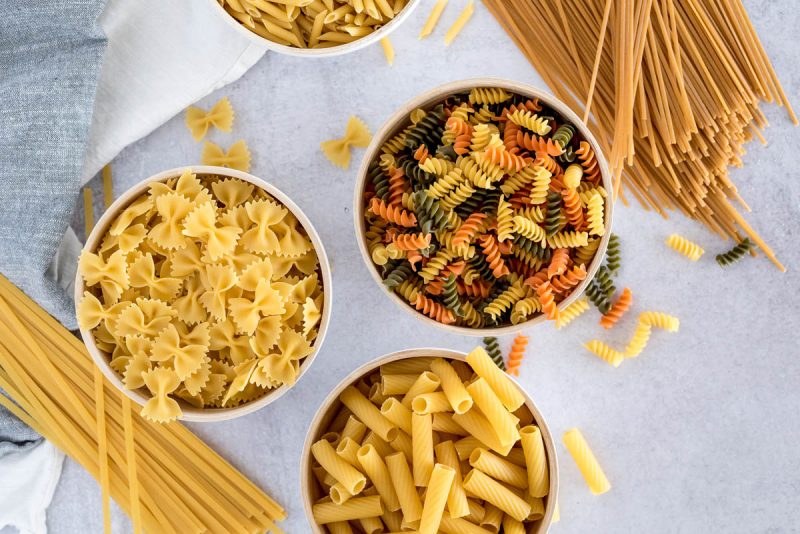
If your household is anything like mine, you love a good pasta dinner! There are so many delicious options that it’s the perfect go-to dinner, whether you’re serving just yourself or a hungry crowd.
Making pasta in the Instant Pot is one of the easiest ways to do it. No babysitting, stirring, or boiling water necessary! (And no tomato sauce splattered all over my oven afterwards either!)
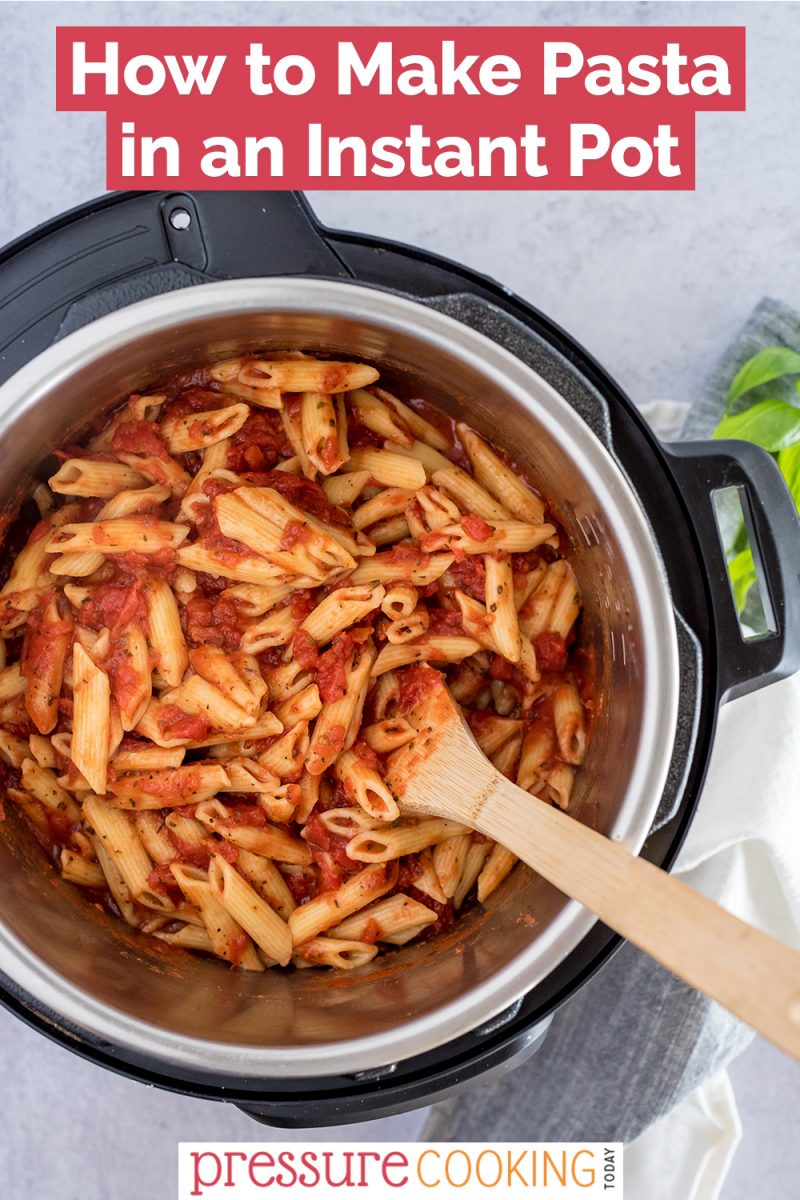
How to Cook Pasta in the Instant Pot / Pressure Cooker
While I’ve included a bunch of tips below, there’s really only four steps you have to worry about. These four steps will give you PERFECT pasta:
- Find your cooking time.
- Add just enough water to barely cover the past in the pot.
- Use an intermittent release to avoid foaming.
- When the valve drops, carefully remove the lid and drain your pasta.
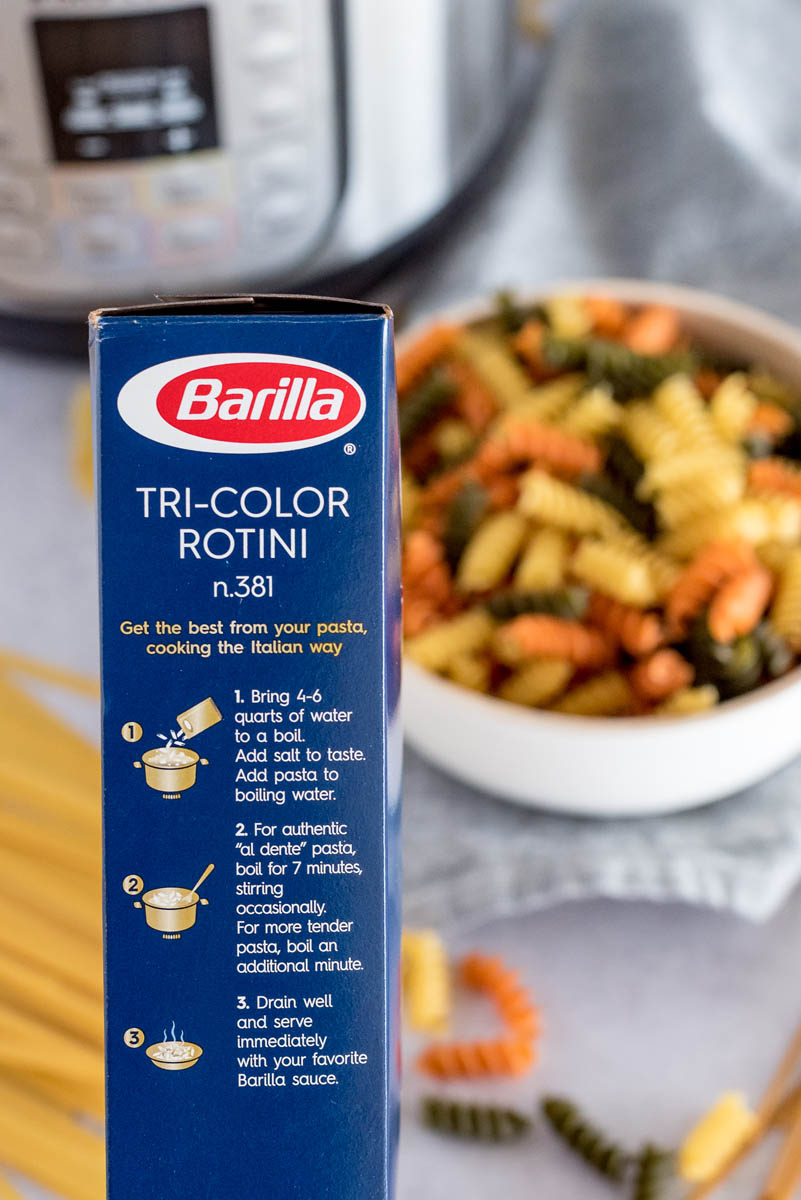
Formula: Calculate the Perfect Pasta Cook Time
For perfect Instant Pot pasta, there’s a pretty simple formula to find the right cooking time: take the time listed on the box, cut it in half, then subtract an additional minute.
For example, for bowtie pasta, if the package says to cook for 12 minutes, I’d pressure cook it for 5 minutes. (12 minutes divided by 2, minus 1 additional minute).
This formula works for regular pasta, whole wheat pasta, gluten-free pasta, rice-based pasta, or pretty much any kind.
Tip: If the cook time is an odd number, I generally round down.
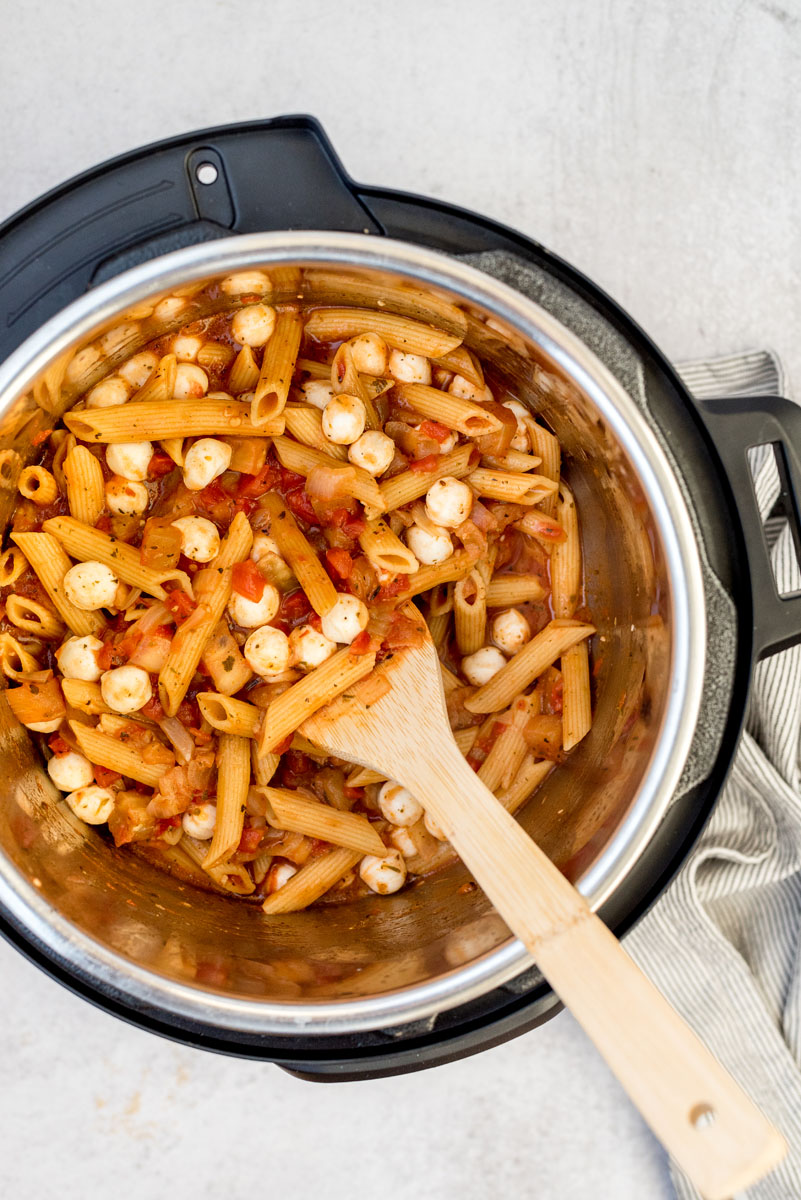
Adjusting for Softer or Firmer Pasta
I recommend starting with the formula above for the first time you make pasta in your Instant Pot. Then the next time, if you want a bit more bite, subtract a minute from the cook time. If you want it softer, add a minute until you get your perfect texture.
After a few times making pasta, you’ll know the perfect timing to cook your brand of pasta to your preferred taste.
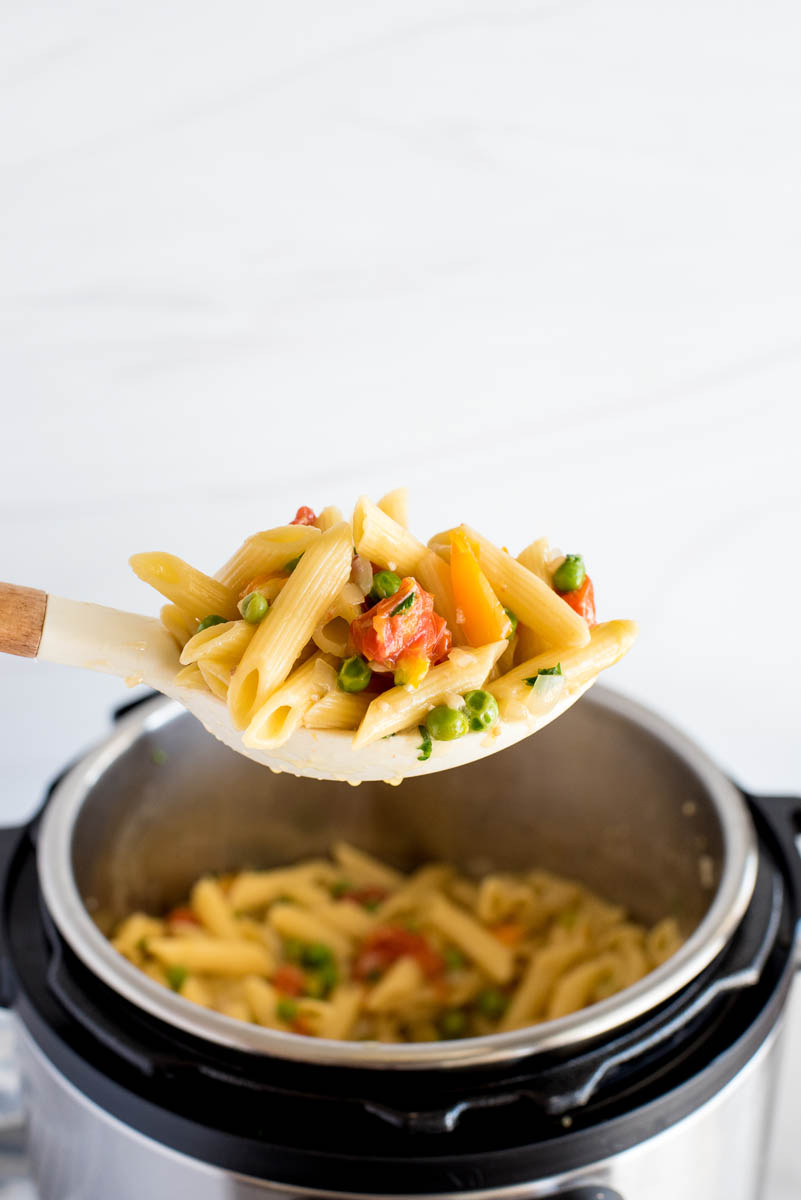
Use an Intermittent Pressure Release
High-starch foods like potatoes and pasta frequently foam while pressure cooking. Usually, a long, slow natural pressure release is better to allow the foam to subside. However, pasta will easily overcook so you need a quick pressure release to keep it from going mushy.
That’s why you’ll use an intermittent release. Here’s how to do it:
- When the cook time ends, flip the pressure valve from Sealed to Venting. Allow the pressure to release until you see foam or large water droplets coming from the valve.
- As soon as this happens, flip the switch back to Sealed and wait for 20 to 30 seconds. This will reduce the foam.
- Flip back to Venting and repeat as necessary until all the pressure is released.
You should only need to do this once or twice.
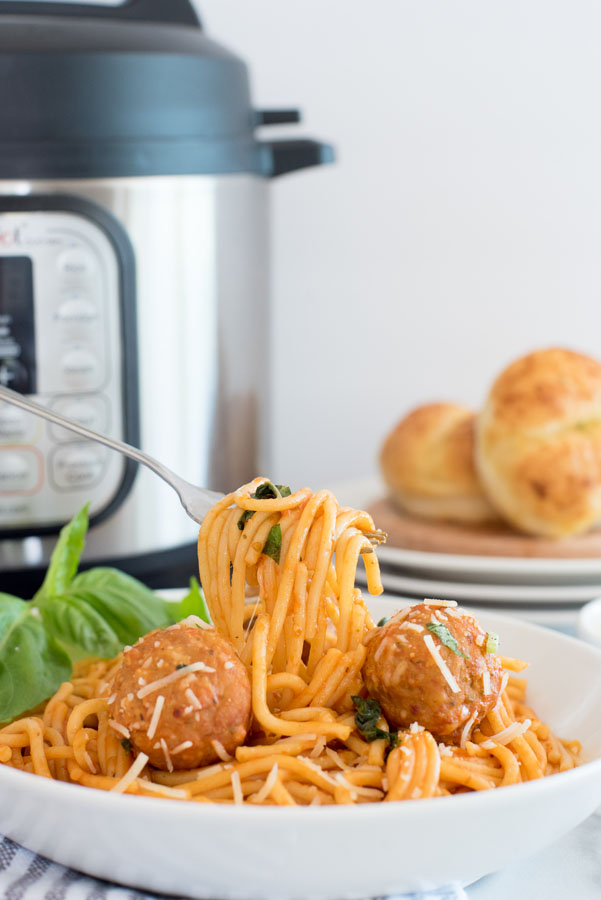
How to Limit Foaming
If you’re worried about the foaming, the best way to reduce foam is by adding cooking fat. You can add oil or butter to the pasta and water.
Or if you’re making a meat sauce, sauté ground beef or chicken in the pressure cooking pot as a first step. Remove the meat from the pot before adding the pasta and water.
Also, note that some brands foam more than others. If you’re having trouble with foaming, consider switching brands and see if that helps.
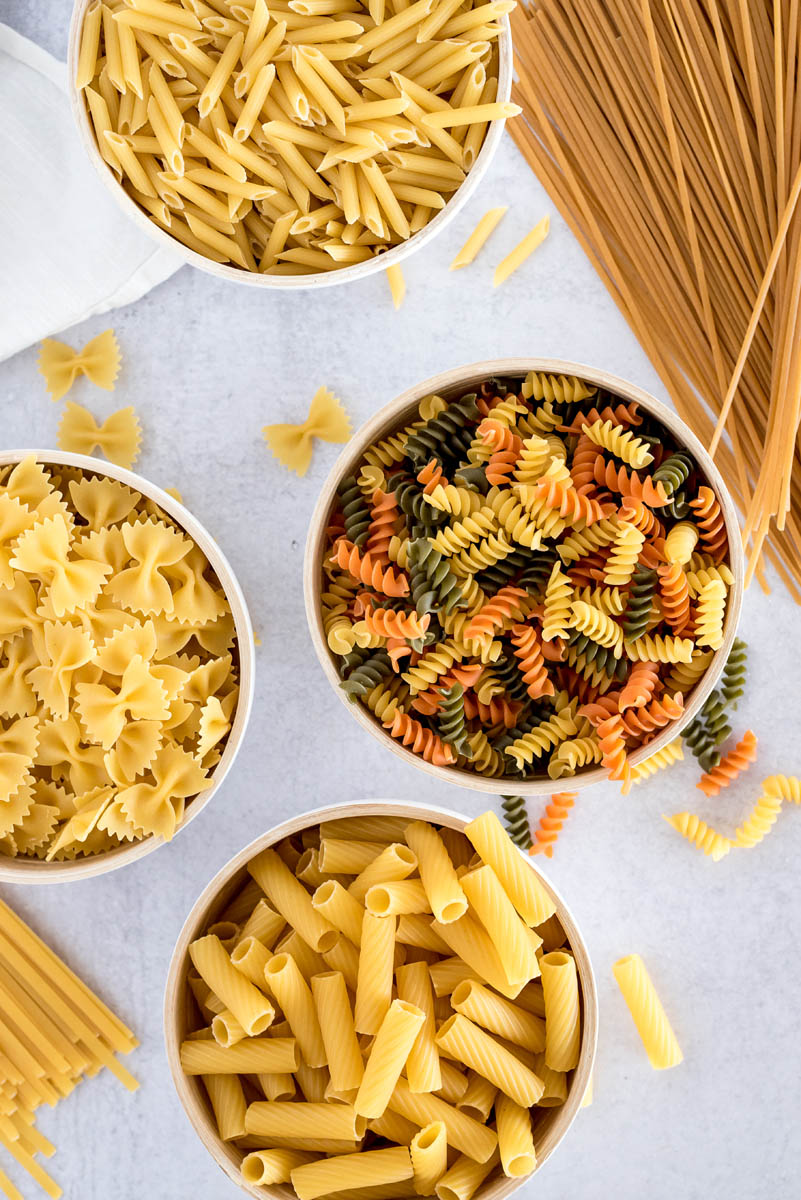
Know Your Noodles
Some pasta shapes are better for pressure cooking than others. Unless I’m following a specific recipe, I prefer to use shorter noodles like rotini, penne, farfalle (bowtie), or shells. Longer pastas like spaghetti, linguine, and angel hair, tend to clump together.
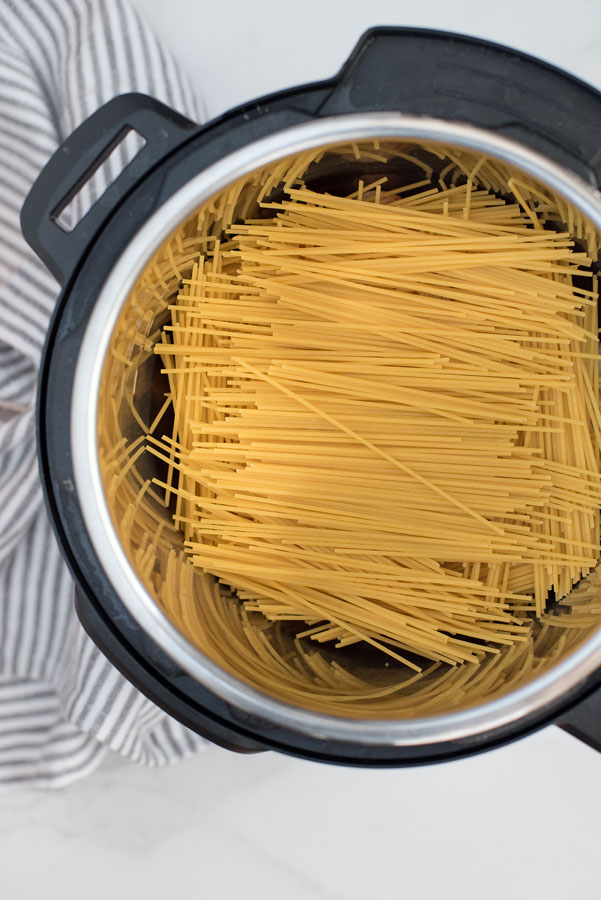
Instant Pot Spaghetti Tips
If you want to cook spaghetti, break the noodles in half and add a tablespoon or two of butter or vegetable oil to the pressure cooking pot. This will help minimize clumping. After you release the pressure, gently stir the noodles. If necessary, use a fork to separate the individual noodles.
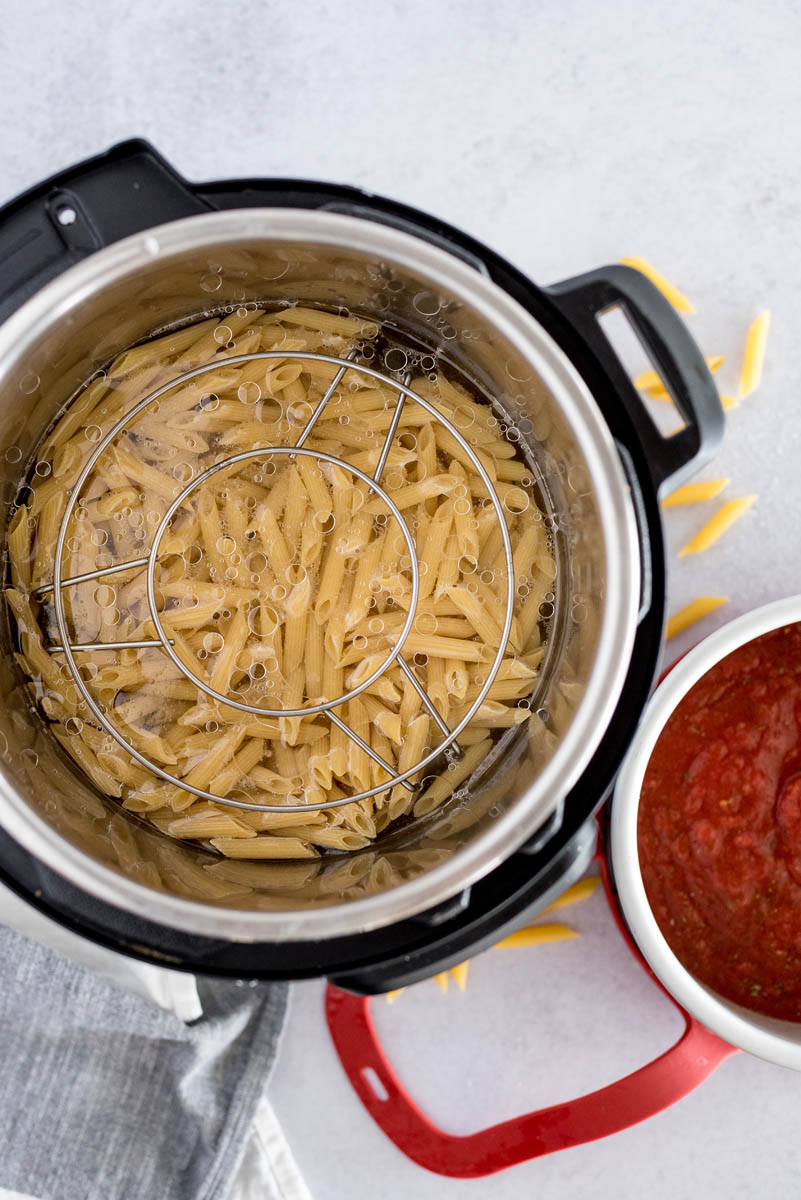
How Much Water to Add?
Whether you’re cooking a single serving or a whole box, use enough liquid to just barely cover the pasta. (Of course, be sure to follow your pressure cooker’s minimum liquid requirements.) After cooking, drain your pasta through a colander or use a ladle to spoon off the extra liquid.
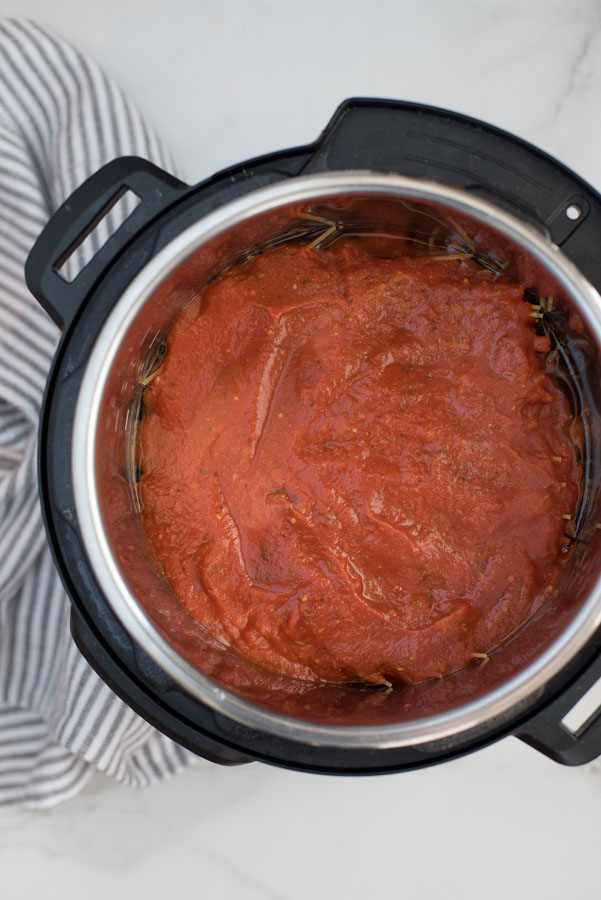
Instant Pot Pasta Sauce
Unless I’m following a specific recipe, I prefer to cook the pasta in water and cook the sauce pot-in-pot above the pasta.
However, you can cook pasta in a sauce. If you do this, it is SO IMPORTANT to add enough liquid to the pot. Many jarred sauces include thickeners, which can create a film on the bottom of the cooking pot that will change how your pasta cooks and may lead to a Burn notice.
If the sauce is thin when you remove the lid after pressure cooking, turn off the Instant Pot. The pasta will continue to absorb liquid as it cools.
If the sauce has far too much liquid, select Sauté and simmer the pasta until the sauce is somewhat thickened.
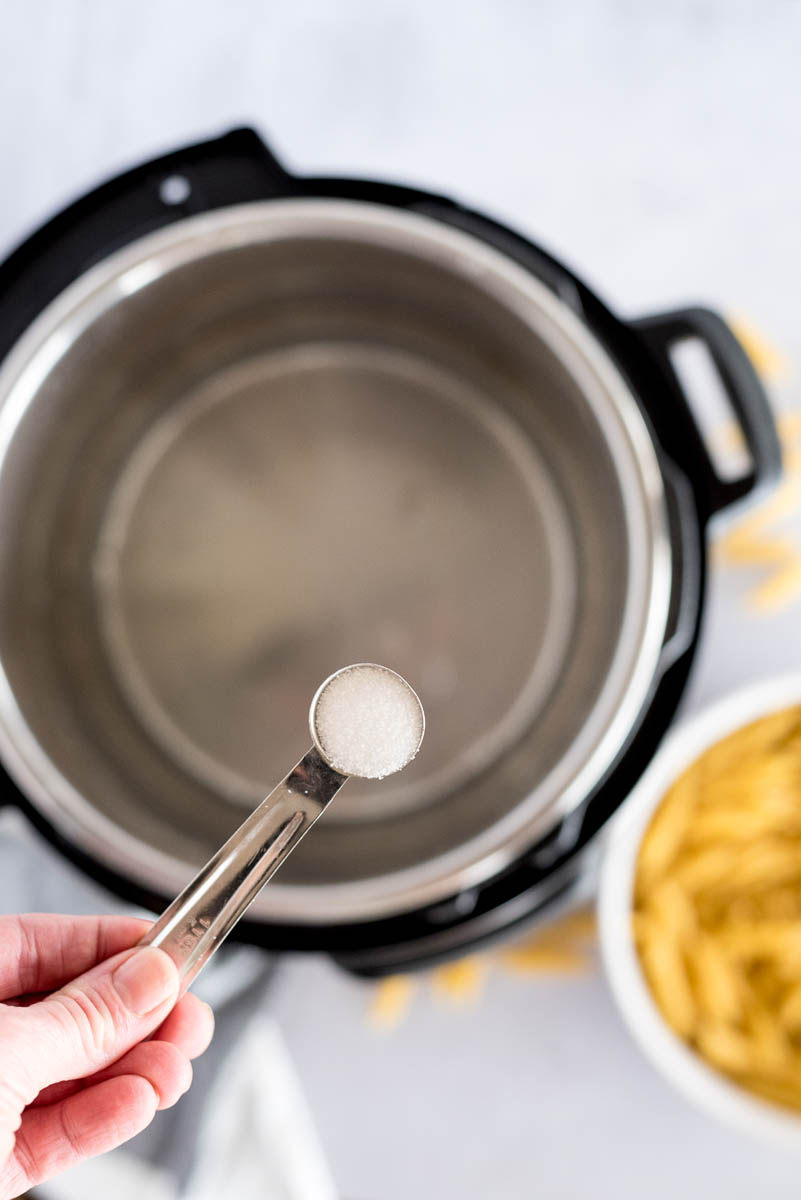
Salt Your Water
For really flavorful pasta, there’s no substitute for salting your water. It absorbs into the noodles and really enhances the flavor.
I rarely actually use a measuring spoon—usually I’ll just eyeball a teaspoon and toss it in.
(Also, for the record, Martha recommends avoiding iodized salt for this job.)
Instant Pot Pasta Recipes
Want to see some examples of different pasta shapes and cook times? Use some of our favorite Instant Pot pasta recipes as a guide.
(For your convenience, a note about their cook times and pasta shapes are included below.)
Instant Pot Spaghetti and Meatballs
Instant Pot Spaghetti and Meatballs has a short and sweet 4-minute cook time. (Or just 2 minutes if you use Thin Spaghetti.) The meal takes just 15 minutes start to finish!
Instant Pot One-Pot Tortellini
Easy One-Pot Tortellini has a short 2-minute cook time at high pressure.
Instant Pot Shrimp Alfredo Pasta
Shrimp Alfredo Pasta is made with rotini in a creamy parmesan-garlic sauce with a 4-minute cook time.
Instant Pot Pasta Primavera
Springy Pasta Primavera is made with penne pasta, peas, and tomatoes. The penne uses a 5-minute cook time.
Quick & Easy Instant Pot Bow Tie Pasta
This easy bow tie pasta is a go-to weeknight meal. The bow tie (farfalle) pasta has a 5-mintue cook time.
Instant Pot 5-Cheese Baked Ziti
This Instant Pot 5 Cheese Baked Ziti is inspired by Olive Garden’s cheesy, crispy baked ziti with alfredo and marinara sauce. The ziti uses a 5-minute cook time.
Instant Pot Rosemary-Bacon Mac and Cheese
Creamy Instant Pot Rosemary-Bacon Mac and Cheese has melted Gruyere, fresh herbs, and smoky crumbled bacon on top. The small shells have a 4-mintue cook time.
Instant Pot Amish Macaroni Salad
Instant Pot Amish Macaroni Salad is a creamy chilled pasta side dish recipe with crunchy veggies and a vinegar and mayo dressing. The small macaroni noodles have a 5-minute cook time (the eggs cook at the same time!).
Instant Pot Pepperoni Pizza Pasta
This kid-friendly meal uses rigatoni pasta and browns it with an irresistible golden, cheesy top. The rigatoni has a 6-minute cook time.
Instant Pot Chicken Alfredo Lasagna
Instant Pot Chicken Alfredo Lasagna is layered with ricotta, parmesan, and mozzarella. It's cooked pot-in-pot with a 20-minute cook time.
Instant Pot Lazy Lasagna
Instant Pot Lazy Lasagna uses broken lasagna noodles and has an 18-minute cook time.
Chicken Enchilada Pasta
Instant Pot Chicken Enchilada Pasta is a delicious fusion of Tex-Mex and Italian flavors. It's made with rotini pasta and has a 4-minute cook time.
Instant Pot Chili Mac
Instant Pot Chili Pasta has ground sausage, tomato sauce and Tex Mex flavors. The elbow pasta has a 5-minute cook time.
Instant Pot / Pressure Cooker Mac and Cheese
This Instant Pot / Pressure Cooker Mac and Cheese is one of the best Instant Pot weeknight dinners. It also uses elbow noodles and has a 5-minute cook time.
Pressure Cooker American Goulash
This American Goulash uses large macaroni noodles and has a 4-minute cook time.
FOR MORE FROM PRESSURE COOKING TODAY
🥘 Browse our collection of the best pressure cooker / Instant Pot recipes.
💬 Follow Pressure Cooking Today on Facebook and Instagram for the latest updates.
👥 Join our Electric Pressure Cooker Facebook Group. Our positive community of pressure cooking fans use all brands of electric pressure cookers, so it’s a great resource if you have questions about your particular brand.
🥧 If you’re interested in more than just Instant Pot recipes, follow us at Barbara Bakes. There we post amazing breakfasts, breads, and the best dessert recipes!

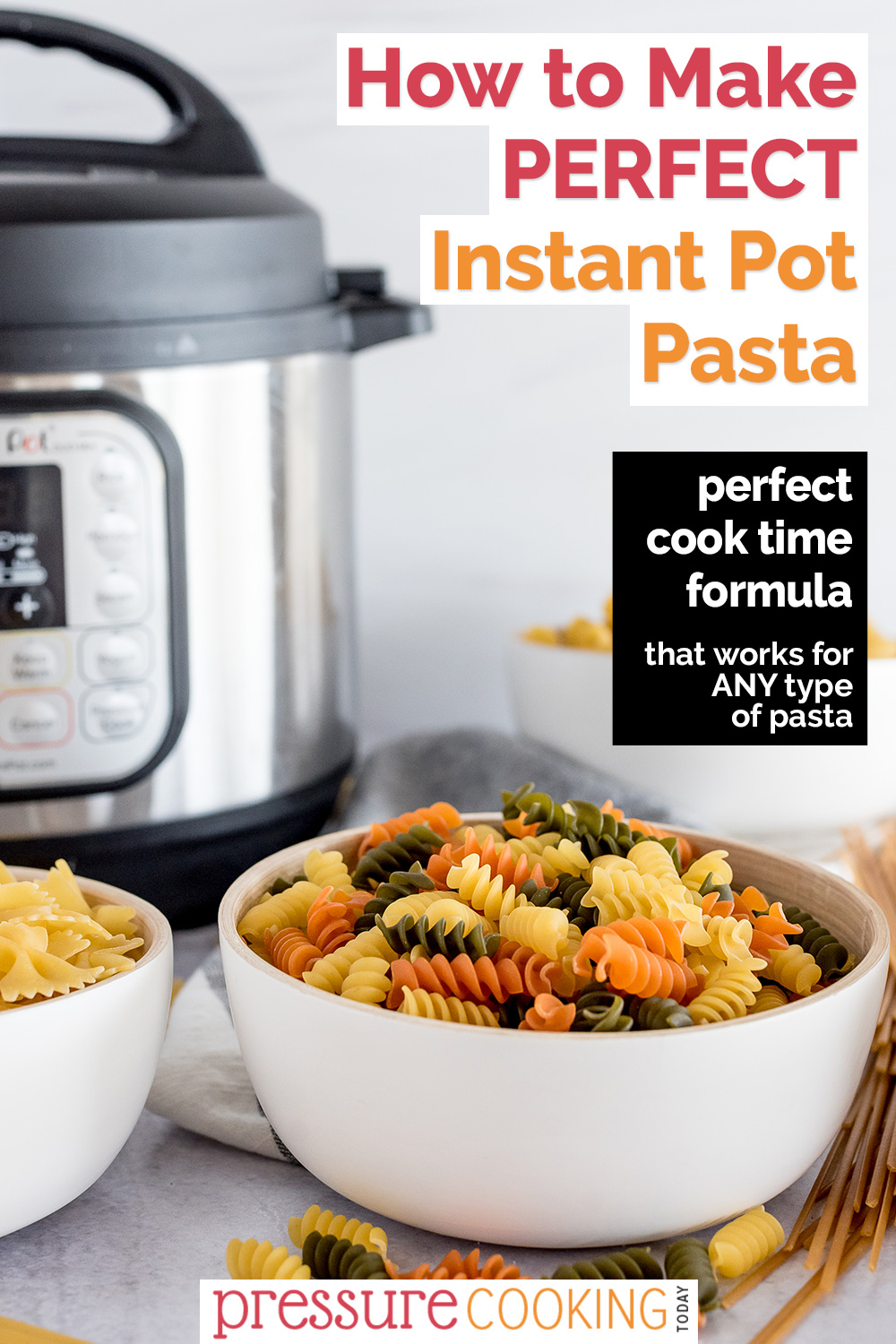
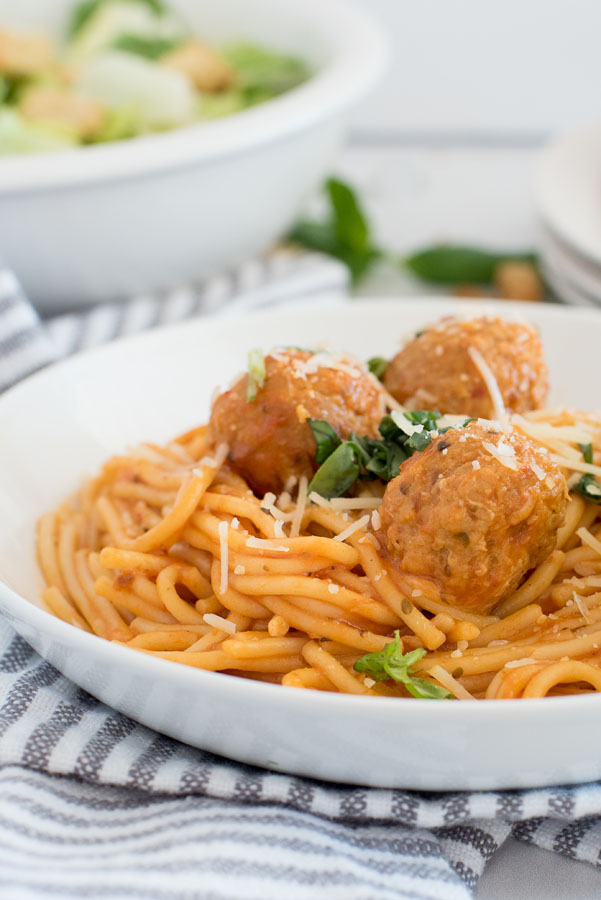
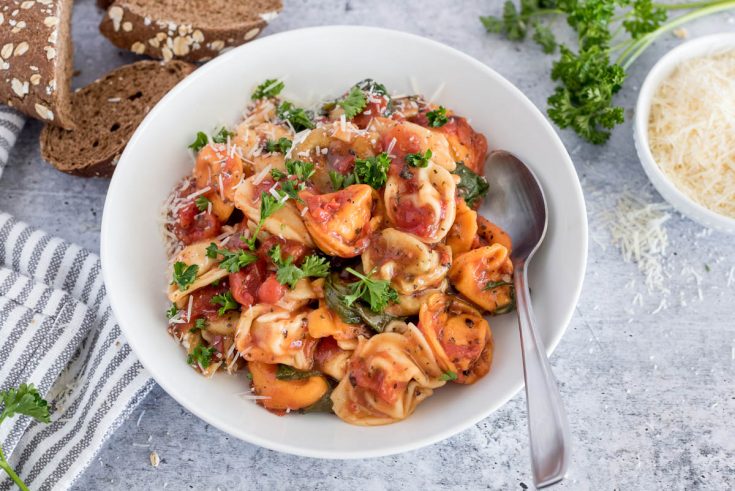
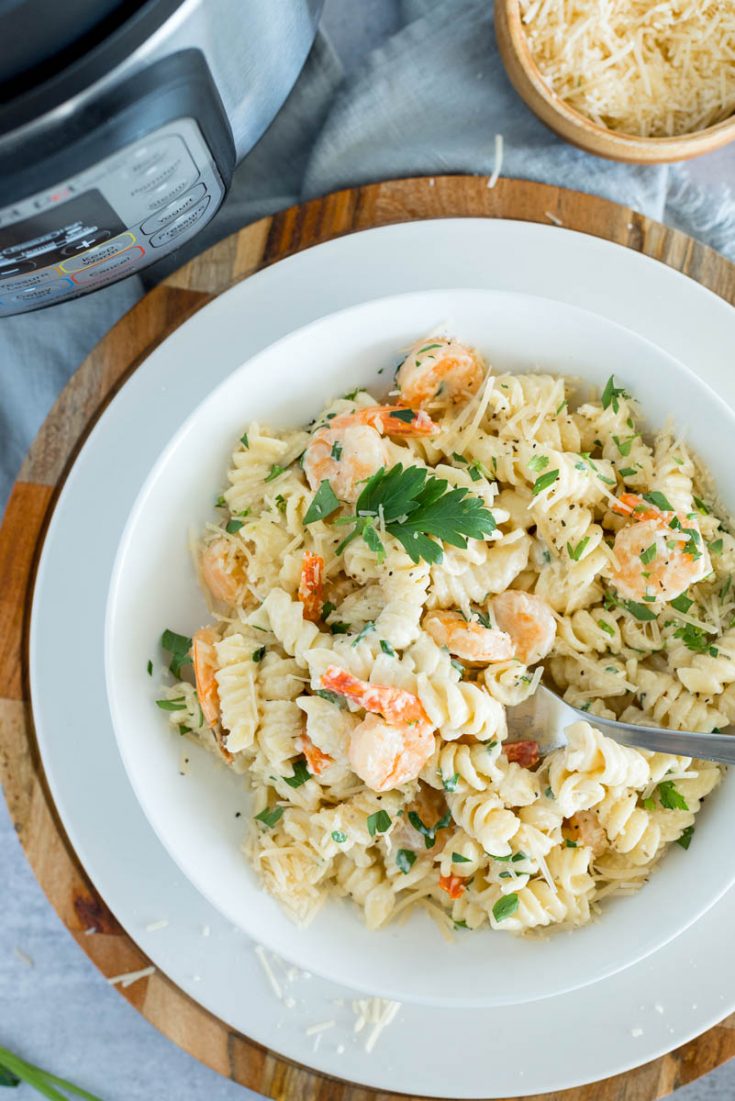
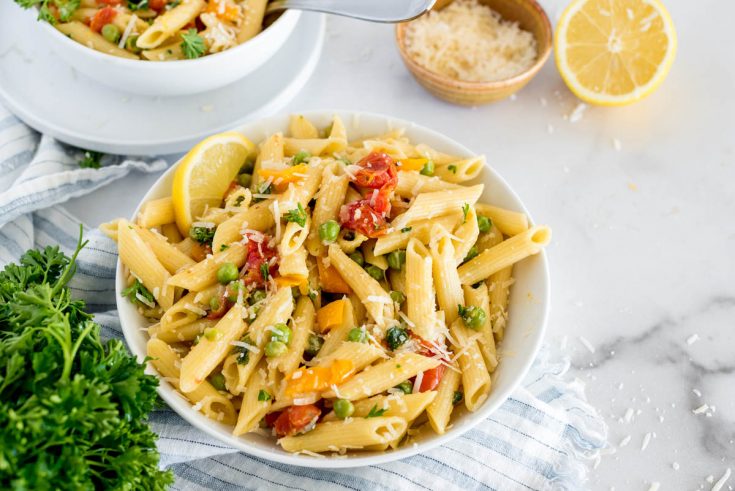
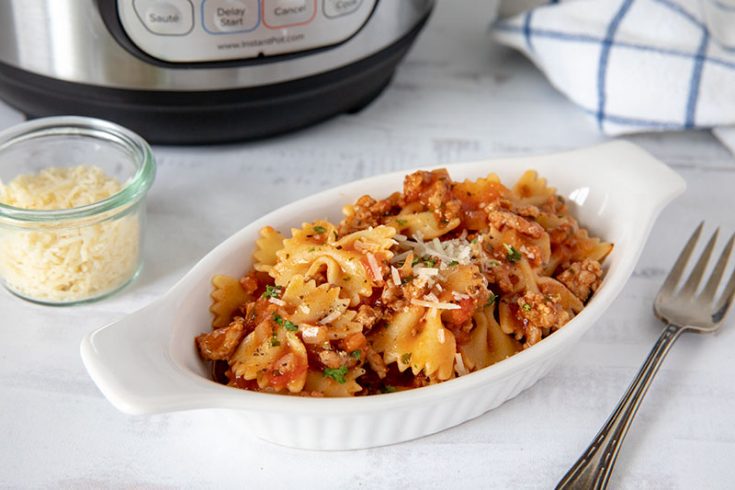
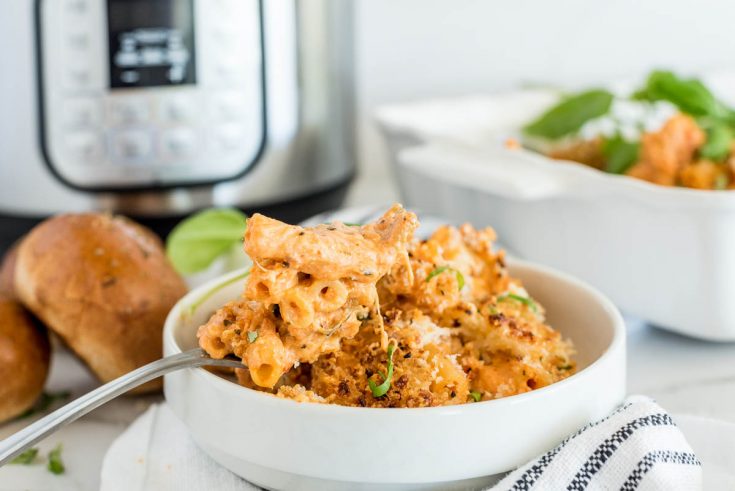
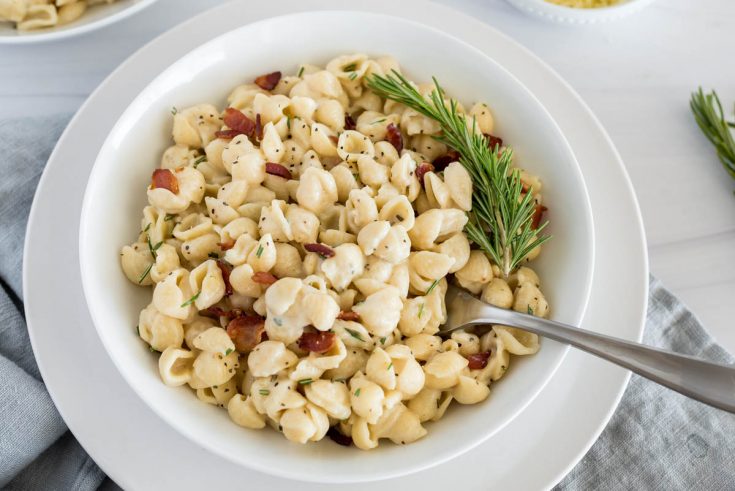
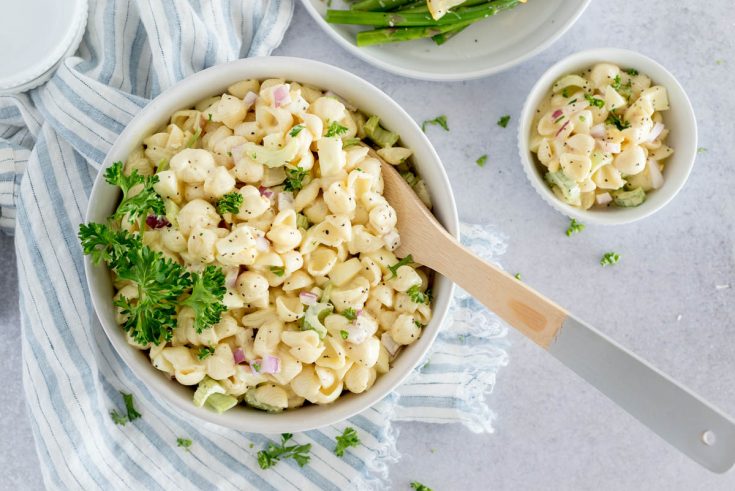
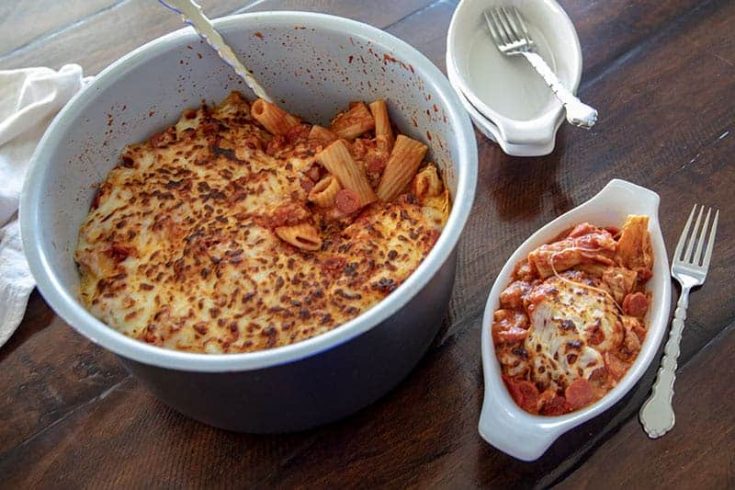
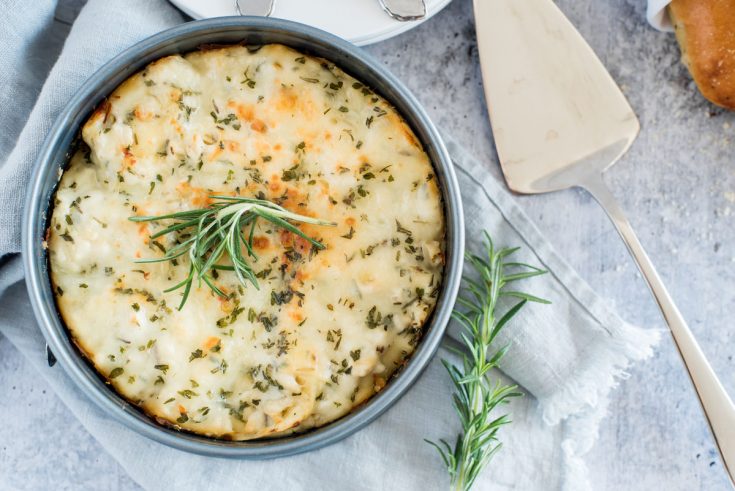
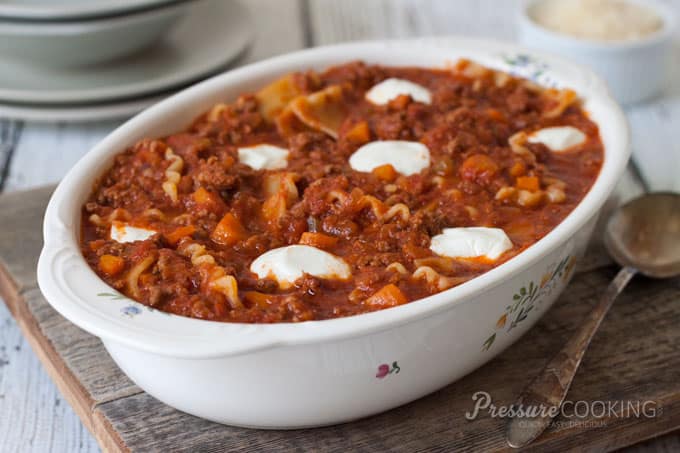
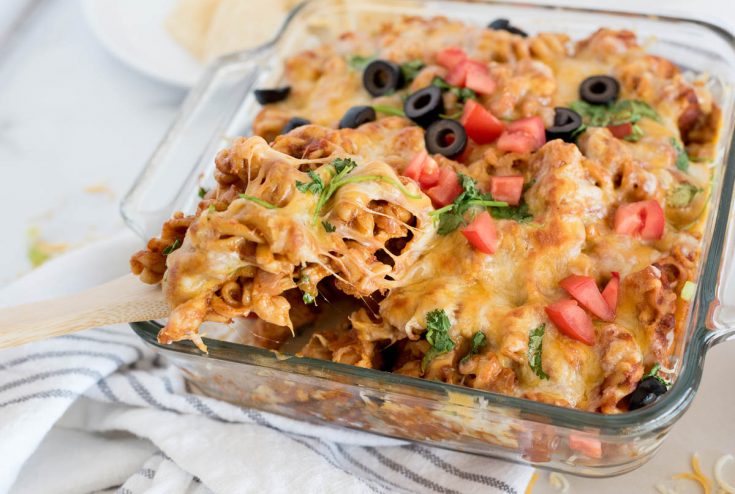
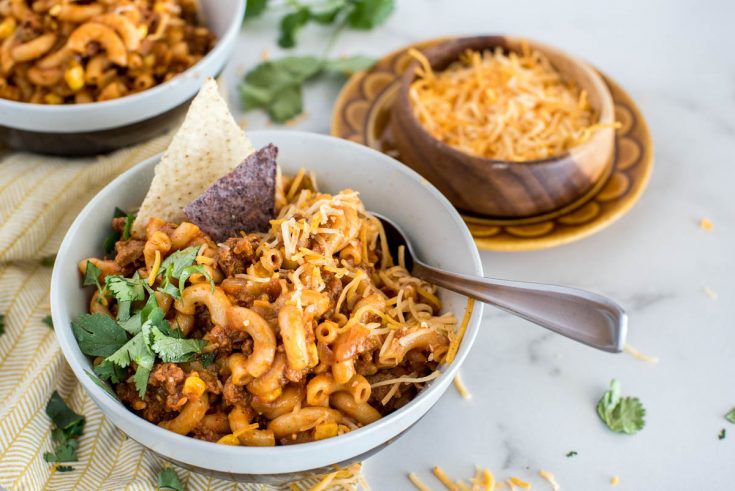
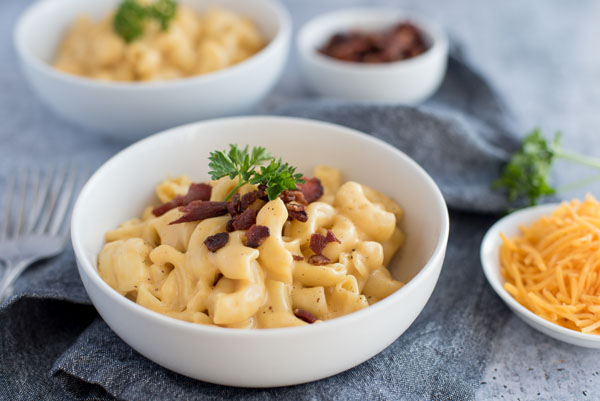
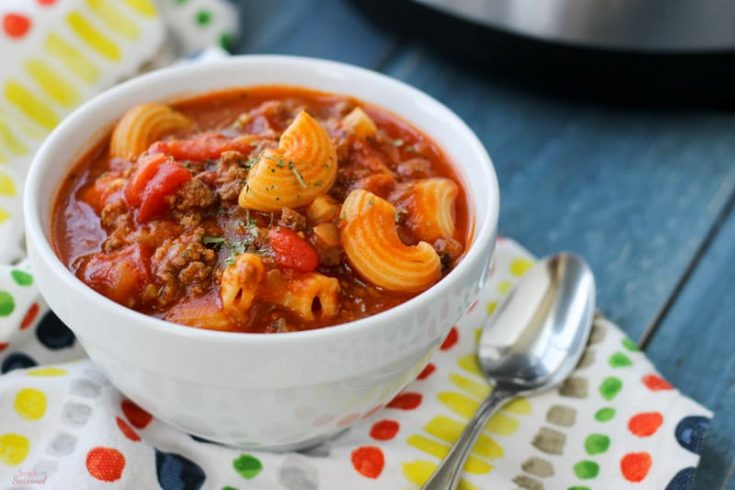
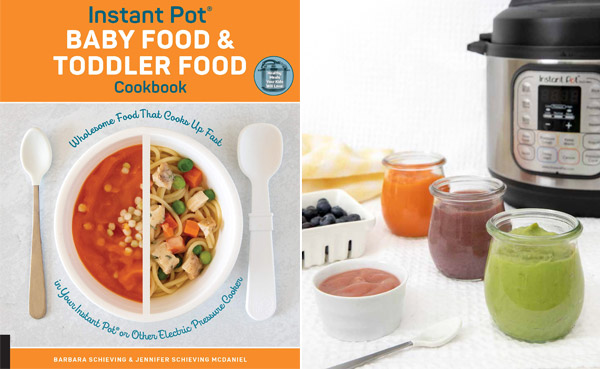



When I cooked pasta in my Ninja Foodi with the same ratio of water and pasta as your recipe (which I have found is very similar to all other recipes), it was still so watery. Help! What am I doing wrong in my pressure cooker?
Hi Alyssa – it could be the type of pasta you are using requires less liquid. What type of pasta are you using? You can either try a different brand or just use less water and keep a note of what works for you.
Thanks for the reply! I used shell pasta. This is the 3rd recipe that I’ve tried in my Foodi and none have worked out well for me, so I’m just trying to figure out what I might be doing differently/wrong!
This totally screwed up my dinner, ninja foodi covered the noodles, went one minute under half, and noodles weren’t done. That’s not the part that ruined my dinner, I timed my stir fry cook perfectly and now the meat of over cooked from sitting in the pot with the lid on while re cooking noodles…
Hi Tor – sorry you had trouble with the timing of your dinner. It can be difficult to judge how much time pasta will take to cook in the pressure cooker since time to pressure and time to release the pressure varies as well as the brand and type of pasta you are using. I’m sure with more practice you’ll be better at timing your meals.
How can you not say whether to set for high or low pressure? How can anyone not say that?
The recipe for a full pasta/sauce dish says “high pressure”, but the entire rambling plain-pasta section fails to do so. There is the time formula; there is the intermittent repeated quick release; there is nothing – nothing – about high or low pressure in the manual setting. I even did a find-text search for every instance of the word “pressure”, and it was not there.The IP Duo has a choice of “Manual” settings for “High” and “Low” pressure within the “Manual” setting. I usually ignore writers who fail to tell readers what pressure to set, but this started out looking so good. It was a first impression that failed to deliver.
Hi VeeJay – very few things cook on Low pressure, so high pressure can be assumed unless you’re specifically told to cook at low pressure. The sample recipe on the post does specify high pressure. I’ve added high pressure to the explanation as well.
Could I use a metal bowl in place of the cake pan?
Hi Sabrina – yes, a metal bowl will work if you don’t have the right size cake pan.
dang, i always transfer my bags of pasta to nicer plastic containers in my pantry as soon as i get home from the grocery, i have no idea what is the recommended cook time for rotinis.
Hi Roxanne – American Beauty rotini has a cook time of 8 minutes on the stove, so in the pressure cooker you would use a 3 minute cook time.
So the pasta doesn’t get drained? How does it not come out starchy?
That’s right the pasta does not get drained. The sauce may be a little bit starchy, but not noticeably so and if you prefer, you can cook the sauce on top of the pasta pot in pot and use more water and drain it.
Appreciate the tips on intermittent release and cooking plain pasta. Thank you.
Any chance of getting the info put into a printable pdf? I have most of the recipes (in Barbara’s book!), but would love to have the general info at my fingertips for when making &/or converting other non-ip/pc recipes.
My menfolk love a ready made mac sauce. If i’m using this with macaroni pasta, would i add a cup of water too do you think to cook the pasta in?
Thanks
Hi Viv – what type of ready-made mac sauce are you using? Generally, you always want to add enough water just to cover the pasta.
My 3 teens love a pasta dish from a local restaurant called MEXICAN MAC described as using “cavatappi pasta smothered in our creamy béchamel sauce & sharp cheddar cheese with chorizo sausage, onions, green peppers, tomatoes & pepperjack cheese—slightly spicy“. The recipe I use at home, which seems to be an okay substitute, minus the meat and veggies, is from Taste of Home.com (https://www.tasteofhome.com/recipes/mexican-macaroni-and-cheese/). Can you convert to an IP recipe? Making the cheese sauce is time consuming and it doesn’t seem to come out quite right in my hands. Thanks!
Hi Erma – you could spice up my mac and cheese recipe https://www.pressurecookingtoday.com/macaroni-and-cheese-in-the-pressure-cooker-and-a-giveaway/ Add the chili powder and paprika instead of the dry mustard and cayenne pepper. Then stir in the jalapenos after the cheese is melted. The pasta will continue to absorb the sauce while it’s baking in the oven, or you could even use a CrispLid to melt the cheese right in the pot. https://www.pressurecookingtoday.com/mealthy-crisplid-air-fryer-lid-for-electric-pressure-cooker/
Can you cook pasta, pasta source and chicken breast all at the same time
Hi Chris – yes, you can. You just have to dice the chicken so it has the same cook time as the pasta. Here’s two recipes with chicken, sauce and pasta https://www.pressurecookingtoday.com/pressure-cooker-chicken-bacon-penne-pasta/ https://www.pressurecookingtoday.com/chicken-enchilada-pasta/ These two you could sub chicken https://www.pressurecookingtoday.com/pressure-cooker-bow-tie-pasta/ https://www.pressurecookingtoday.com/pressure-cooker-pepperoni-pizza-pasta/
what if I dont have a cake pan, may I cook it all together?
Hi Gissy – if you want to cook it all together, I recommend this recipe https://www.pressurecookingtoday.com/pressure-cooker-bow-tie-pasta/
ugh seems complicted
Not complicated – just a few things to be aware of.
I was skeptical about trying pasta in my IP until my favorite “meals for two” blogger put up a recipe for Instant Pot Spaghetti with ground beef, etc., all done in the IP.
I’m a believer now and thank you for these great tips.
Sounds like a great recipe. I like the idea of cooking the pasta separate from the sauce and I plan to try it soon. I was wondering how I would add some sliced mushrooms or green beans to this recipe. I am pretty much a newbie and I’m using the 3 qt. IP. I can’t wait to try this recipe. You explained everything so clearly. Will be hard to mess up. Thanks.
Hi Phyllis – If you’d like to add mushrooms to the sauce, I would saute them before adding the pasta and water to the pressure cooking pot, or add canned mushrooms without sauteing. Typically green beans are served along side pasta, so I’d probably cook them separately.
Thanks for this great information on Pasta. Also I have your cookbook “The Electric Pressure Cooker Cookbook” and love it!.
That’s great – thanks Beverly!
Hi! I’m new to the pressure cooker game and was having a hard time finding how long to cook pasta. Thank you for having a clear answer- it worked perfect!
We’re so glad we could help! Have fun using your new pressure cooker!
Jennifer-I had to pop back in and tell you I finally got around to trying this recipe tonight for dinner…it was a hectic day and I wanted something easy that went together fast. This fit the bill-and boy oh boy is it DELICIOUS! Even Mr. “Where’s the meat?” loved it-he said that several times while we were eating. He couldn’t believe it only took 4 minutes to cook both the pasta and the sauce. Thank you SO much for giving me this simple go-to dinner idea that is on the table in a flash. I’ll be making this again and again.
Carol, this made my night! I’m so glad this was a hit!!
I’m curious if anyone has done gluten-free pastas? Since the base is ‘rice’ and not flour, I’m thinking you cannot cook this in the IP? When cooking on the stove, the water is very milky from the rice. Thank you.
My sister in law eats gluten free, so when she comes to our house for dinner, we’ve used the Barilla gluten free pasta pictured in this post. https://www.pressurecookingtoday.com/how-to-cook-pasta-in-the-instant-pot/
We cooked it in a 6 quart Instant Pot and needed to use an intermittent pressure release (opening and closing the valve), but it worked great for us! Let us know if you try it!
Thanks so much for your very informative article. I’m not great at cooking and would like to get better. I received an instant pot for Christmas and want to learn to use it. My question is when you say put a rack in the pot what would that look like? I have a little rack that you put in the bottom of the pot that came with my duo plus ip, so i’m not sure that’s what you would mean for this recipe. Can you send a link of what the rack would look like. I hope this doesn’t sound strange. Very much a newbie at cooking.
Hi Rebekah! I’m so glad you asked! There are two sizes of racks/trivets—the short kind that comes with the Instant Pot and a little taller one that’s really useful for cooking over taller items pot-in-pot. For cooking the pasta sauce over the pasta, I prefer the taller one. I know some people balance the one that comes with the instant pot on the noodles, but I’m always worried it’d spill. The one I use and recommend is #14 on the accessories list here: https://www.pressurecookingtoday.com/electric-pressure-cooker-instant-pot-gift-guide/#accessories
Five star ALL THE WAY, THANK YOu!!
This is such a great source for pasta lovers. SOO good.
This formula for cooking pasta worked perfectly! I’ve jotted it down and will use it often! Thanks, Jennifer 🙂
The perfect instructions for pasta. I always got a burn notice on my IP before this.
Thanks Ava – glad it was helpful!
This is awesome! Thanks for sharing!
These tips have helped us SO MUCH!
I didn’t know you could cook pasta in a pressure cooker!
Brilliant! Now I know what was causing my IP pasta issues. Thanks so much!!
Your Instant Pot recipes always cook perfectly. This pasta is no exception!
Hi Jennifer! I hope this isn’t a dumb question, but how much water do you use?
Hi Cindi! It’s a great question!!! The amount of water I use varies based on how much pasta I’m cooking. When I make a full 16 ounce box of pasta, I’ll generally use around 4 cups of water—sometimes I need a little more to cover the noodles, sometimes a little less. And you can go ahead and use a long spoon to push the noodles flat against the bottom of the pan so that they’re all covered and spread out evenly.
I hope this helps!
Thanks for all the guidance on IP cooking pasta. I’m wondering how those instructions would possibly change for fresh pasta.
In my experience, regular fresh pasta have a really quick cook time—like 2 or 3 minutes in boiling water—so I’d hesitate to cook fresh pasta in the pressure cooker. However, I’ve had great luck with refrigerated ravioli and other longer cooking fresh pastas. The brand of ravioli I use from the store has a 11 minute cook time, so I cook it for 5 minutes in my pressure cooker.
@Jennifer: Thanks so much for posting this informative, well-written, easy-to-follow article. I, like many, have been hesitant to prepare pasta in our IP due to warnings of “soggy” pasta. Your formula sounds easy and from what you’ve shared, a tried and true method. I look forward to viewing more of your posts.
Thanks so much! I hope your pasta turns out great!
There is a picture in you post of a dish with elbow macaroni, bacon and it looks like rosemary in a cream sauce. Can I get the recipe?
Love your recipes and instructions.
Thanks,
Hi Eileen – that’s a picture of the Grown-Up Mac and Cheese on page 268 of my cookbook https://amzn.to/2QZObfC It gets great reviews 🙂
Great article. Thank you for the info Barbara. I think I will be brave enough to try in my IP instead of the stove top now.
I really want to try this recipe. I have had my instant pot for over three years now but I have never cooked pasta in it because of the foaming. This looks like a good recipe for a newbie like me. What size is the can of crushed tomatoes? Thank you.
Oh, I hope you do give it a try! I use the bigger 28 ounce can of tomatoes with this recipe. However, if you just have a smaller size can on hand, you can still use that too, just half the seasonings. I’ll update the recipe. 🙂
Hi Jennifer-what a great post with lots of valuable-for-me information. I have only cooked pasta in the pressure cooker when the specific recipe calls for it. I guess I’m a creature of habit…being Italian, I get the big pot full of water and cook it on the stove. Time for me to think outside the box…the pasta box that is! Using the pressure cooker would definitely be easier and quicker…takes FOREVER for that doggone water to boil. I may just try your recipe above this week. It will be perfect for the upcoming busy week when I’ve been going nonstop trying to get holiday stuff done and want something easy and quick to serve.for dinner. What size can of tomatoes do you use?
Hi Carol, sorry to omit the size—I’ll update the recipe. It’s the bigger 28 ounce can of tomatoes that I use—I like to have lots of sauce and I’ll even freeze the extras for lunches if there is any. 🙂
We’ve been making this a lot this month as well—there’s just so much going on! I hope you enjoy it!